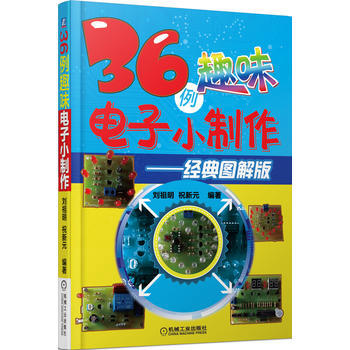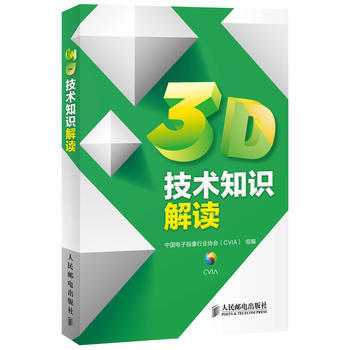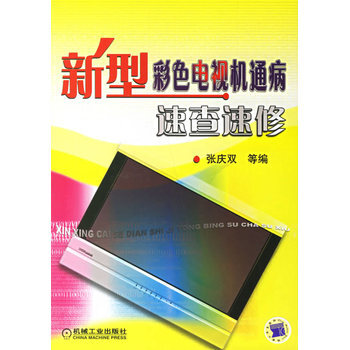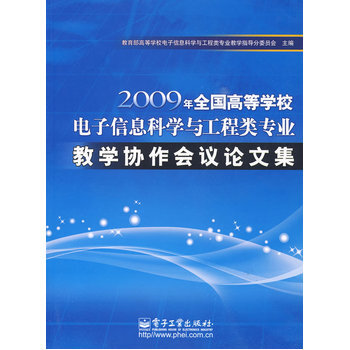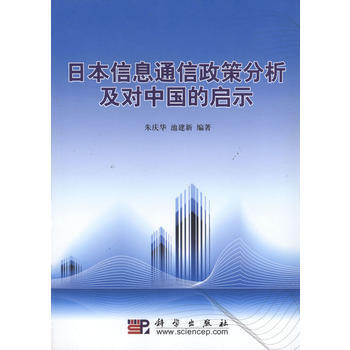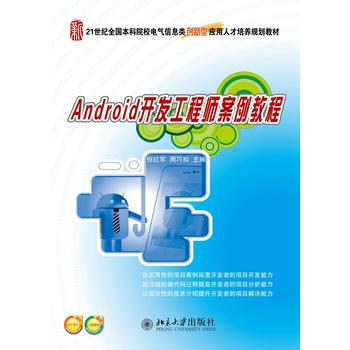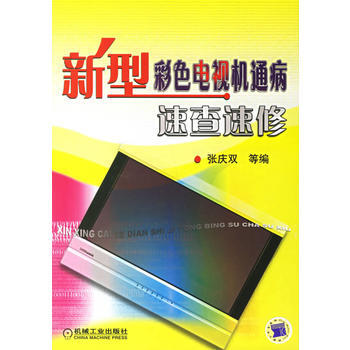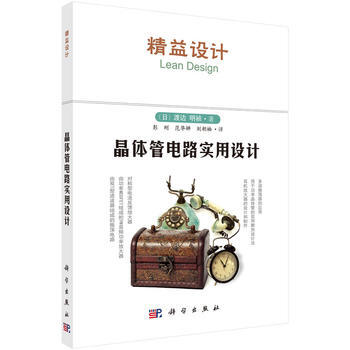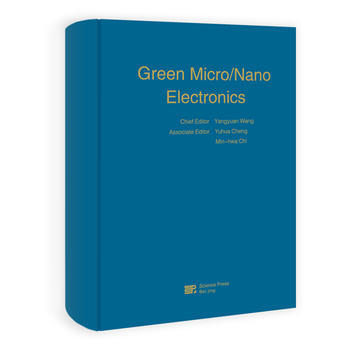
Green Micro/Nano Electronics pdf epub mobi txt 电子书 下载 2025
- Microelectronics
- Nanoelectronics
- Green Electronics
- Sustainable Technology
- Low Power Design
- Emerging Technologies
- Materials Science
- Device Physics
- Energy Efficiency
- Environmental Impact

具体描述
基本信息
书名:Green Micro/Nano Electronics
定价:218.00元
售价:148.2元,便宜69.8元,折扣67
作者:Yangyuan Wang、Yuhua Cheng、Min-hwa Chi
出版社:科学出版社
出版日期:2013-05-01
ISBN:9787030363312
字数:
页码:
版次:1
装帧:精装
开本:16开
商品重量:1.562kg
编辑推荐
《绿色微纳电子学(Green Micro\NanoElectronics)》首先提出了“绿色微纳电子学”的概念,并分别从能源经济、社会文化、低功耗集成电路设计、绿色集成电路芯片制造、绿色电子封装、微纳电子新器件结构、绿色存储器的发展和集成微纳系统(M/NEMS)等各个角度对绿色微纳电子学进行了阐述,介绍了在这些方面国内外学术界和工业界的**进展;此外,王阳元还从新能源的应用角度,对半导体绿色照明光源、薄膜太阳能电池等有关领域的发展进行了学术探讨。本书是全英文版。
内容提要
提出“绿色微纳电子学”的概念,分别从能源经济、社会文化、低功耗集成电路设计、绿色集成电路芯片制造、绿色电子封装、微纳电子新器件结构、绿色存储器的发展和集成微纳系统等各个角度对绿色微纳电子学进行阐述,介绍这些方面国内外学术界和工业界的*进展;此外,还从新能源的应用角度,对半导体绿色照明光源、薄膜太阳能电池等有关领域的发展进行了学术探讨。
目录
Chapter 1 Energy Resources and Their Roles in Economic and Social Development
1.1 Energy Generation and Reserves
1.1.1 Classifications of Energy Resources
1.1.2 Reserves of Conventional Energy
1.1.3 Reserves of New Energy
1.2 Use and Consumption of Energy
1.2.1 Use and Production of Energy
1.2.2 Energy Consumption in Life and Production
1.3 Energy and Economic Development
1.3.1 Energy as an Important Factor in Pushing Economic Growth
1.3.2 The Negative Impact of Energy Crisis on Economic Growth
1.3.3 Constraint of Population Growth on Energy Development
1.3.4 Constraints of Environmental Pollution on Energy Development
1.4 Policy Guidance and Measures of Saving Energy
1.4.1 Regulations for Environmental Protection
1.4.2 Tax Policy
1.4.3 Major Planning
1.4.4 Important Measures
1.5 Future Development of Integrated Circuits(IC)
1.5.1 Revolutionary Role of IC in Energy Conservation
1.5.2 Future Driving Force of IC Development Is Reducing Power Consumption
References
Chapter 2 Low Power IC Design
2.1 Power Source and Analysis of Integrated Circuits
2.1.1 Static Power
2.1.2 Dynamic Power
2.1.3 Power Analysis
2.1.4 Conclusion
2.2 Circuit-Level Low Power Design
2.2.1 Introduction
2.2.2 RTL-level Low Power Design
2.2.3 Gate-level Low Power Design
2.2.4 Layout-level Low Power Design
2.2.5 Asynchronous Circuit Design
2.2.6 Sub-threshold and Multi-voltage Design
2.2.7 Conclusions
2.3 System-level Low Power Design
2.3.1 Introduction
2.3.2 Dynamic Power Management
2.3.3 Dynamic Voltage Scaling
2.3.4 Low Power Compilation
2.3.5 Low Power Hardware/Software Co-design
2.4 Battery-Aware Low Power Design
2.4.1 Introduction
2.4.2 Battery Model and Battery Discharge Characteristics
2.4.3 Battery-Aware Task Scheduling
2.4.4 Battery-Driven Power Management
2.4.5 Conclusion
2.5 Low Power IC Design and Green IT
2.5.1 Rise of Green IT
2.5.2 Low Power IC Design for Green IT
2.5.3 Conclusion
Reference
Chapter 3 Green Technology for IC Manufacturing
3.1 IC Industry and Environment
3.2 IC manufacturing process introduction
3.3 Modern CMOS Process Flow
3.4 Dry Etching/Cleaning and Greenhouse Gas Emissions
3.4.1 Introduction of Dry Etching
3.4.2 Introduction of Dry Cleaning Process
3.4.3 Process Parameter Optimization
3.4.4 Technology of Exhaust Treatment for Dry and Wet Process
3.5 Wet Etching/Cleaning and Waste Chemicals
3.5.1 Wet Etching
3.5.2 Wet Cleaning in FEOL and BEOL
3.6 Photo-resist Pollution and Control in Lithography Processes
3.6.1 Introduction of Lithography Process and Photo-resist
3.6.2 Background Information on PFOS
3.6.3 Environmental and Health Impacts of Photo-resist
3.6.4 The Importance of PFOS for Lithography Processes
3.6.5 Environmental Friendly Photo-resist Materials
3.6.6 The R & D Trend for Environmental Friendly Photo-resists
3.7 Slurries in CMP and Environmental Considerations
3.7.1 Introduction of CMP Technology
3.7.2 Assessment of Environmental Impact of CMP Slurries
3.7.3 Classification and Characteristics of CMP Slurries
3.7.4 Slurry Disposal
3.7.5 Slurry Storage and Transportation
3.8 IC Manufacturing and Treatment of Waste Chemicals
3.8.1 Common Chemicals in IC Manufacturing
3.8.2 Liquid Chemicals and Waste Water Treatment
3.8.3 Gaseous Chemicals and Exhaust Treatment
3.8.4 Management of Hazardous Substances in IC Manufacturing
3.9 Low Power CMOS Technology for Friendly Environment
3.9.1 CMOS on SOI Technology
3.9.2 High-κ and Metal-gate(HKMG)Technology
3.9.3 Low-κ Interconnection
3.9.4 System-on-chip and System-in-package
3.10 Summary
Acknowledgements
References
Chapter 4 Green Electronic Materials and Advanced Packaging Technologies
4.1 Introduction
4.1.1 Background Information
4.1.2 The Importance of Lead-free Soldering in Green Electronics
4.2 IC Chip Packaging
4.2.1 Packaging Process
4.2.2 Classification of Packages
4.2.3 New Packaging Technologies
4.3 Co-design of Chip-Package-PCB
4.3.1 Challenges of Advanced Packaging
4.3.2 Chip-Package-PCB Co-design Process
4.3.3 Key Issues of Chip-Package-PCB Co-design
4.4 System-in-Package(SIP)and its Applications
4.4.1 Overview
4.4.2 Key Issues of SIP
4.4.3 Applications of SIP
4.5 Three-dimensional Packaging
4.5.1 Overview
4.5.2 Basics of Three-dimensional Packaging
4.5.3 Challenges of Three-dimensional Packaging Technology
4.5.4 Research and Applications of Three-dimensional Packaging
4.5.5 Summary and Development Trends
4.6 Applications of Green Nanoposites in Advanced Packaging
4.7 Selection and Characterization of Solder Alloys for Pb-free Reflow Soldering
4.7.1 Pb-free Solder Paste Materials
4.7.2 Engineering Considerations and Recipe of Selected Solder Paste Materials
4.7.3 Flux
4.7.4 Characterization of Selected Solder Paste Materials
4.8 Board Level Reliability Test
4.8.1 Sample Description
4.8.2 Solder and Intermetallic Analysis after Reflow
4.8.3 Accelerated Thermal Cycling Test(ATC)
4.8.4 Package Shear/Pull Tests
4.8.5 Four-point Bending Test
4.8.6 Drop Test
4.9 Conclusions
References
Chapter 5 New Device Technologies for Green Micro/Nano Electronics
5.1 Overview
5.2 Dynamic Threshold Voltage Device and Adaptive Substrate Bias Technique
5.2.1 Dynamic Threshold Voltage MOS(DTMOS)Device with Gate-Body Connected
5.2.2 Adaptive Substrate Bias Technique for Low Voltage Circuits
5.3 Nanoscale New-structual MOSFETs with Low Leakage Current
5.3.1 Ultra-Thin Body SOI and Quasi-SOI Device
5.3.2 Novel Double-Gate MOS Device
5.3.3 Gate-All-Around Silicon Nanowire MOS Device
5.4 Novel-Mechanism Based Low Power Devices with Ultra-Steep Subthreshold Slope
5.4.1 Tunneling Field Effect Transistor
5.4.2 Impact Ionization MOS Device
5.4.3 Suspended-Gate MOSFET and NEM Relay
Acknowledgements
References
Chapter 6 Nanoelectronics from the Bottom-up:Materials,Devices and Circuits
6.1 Introduction
6.2 Carbon nanotube-based Nanoelectronics
6.2.1 Geometry and Electronic Structure
6.2.2 Synthesis of Aligned Carbon Nanotubes
6.2.3 Nanoelectronic Devices
6.2.4 Carbon Nanotube-based Circuits
6.3 Graphene-based Nanoelectronics
6.3.1 Synthesis and Transfer of Graphene
6.3.2 Electronic Structures and Properties of Graphene
6.3.3 Graphene-based Nanoelectronic Devices
6.4 Molecular Electronics
6.4.1 Brief History of Molecular Electronics
6.4.2 Molecular Electronic Devices
6.4.3 Molecular Electronic Circuits
6.5 Atomic Scale Devices
6.5.1 Single-Atom Transistor
6.5.2 Atomic Switch
6.5.3 Applications of Atomic Scale Devices
6.6 Summary
Acknowledgements
References
Chapter 7 Green Memory Technology
7.1 Overview of Semiconductor Memory Technologies
7.1.1 State-of-art Memory Technologies Toward Scaling Limit
7.1.2 Emerging Semiconductor Memory Technologies
7.2 Resistive Random Access Memory(RRAM)
7.2.1 Principle and Mechanisms
7.2.2 RRAM Characteristics
7.2.3 RRAM Technology
7.3 Phase-change Random Access Memory(PCRAM)
7.4 Magic Random Access Memory(MRAM)
7.5 Summary
Acknowledgements
References
Chapter 8 Microelectromechanical/Nanoelectrome chanical Systems and Their Applications
8.1 Background of MEMS
8.1.1 Definition of MEMS
8.1.2 Features of MEMS
8.1.3 Nanoelectromechanical System
8.1.4 Influence and State of MEMS/NEMS
8.2 Silicon-based Micromachining
8.2.1 Surface Micromachining Technology
8.2.2 Bulk Micromachining
8.3 Nanomachining Technology
8.3.1 Nano Lithography Technology
8.3.2 Nanoimprint Lithography
8.3.3 Spacer Technology
8.3.4 Fabrication of Nano-forests Based on Oxygen Plasma Removal of Photoresist
8.3.5 Nanosphere Self-assembly and Etching Technology
8.4 Categories and Applications of MEMS
8.4.1 Micromechanical Sensors
8.4.2 Optical MEMS
8.4.3 Microfluidics
8.4.4 Micro/Nano Bio-sensors/Bio-chips/BioMEMS
8.4.5 Applications of Micro/Nano Technology in System
8.5 RF MEMS
8.5.1 MEMS Switch/Relay
8.5.2 MEMS Inductors
8.5.3 Tunable Capacitors
8.5.4 Micromechanical Resonators and Filters
8.6 Power MEMS
8.6.1 Power Generator
8.6.2 Micro Energy Harvesting System
8.6.3 Mechanical Vibration
8.7 Environmental MEMS
8.7.1 Atmospheric Environmental Monitoring
8.7.2 Water Environmental Monitoring
8.7.3 Environmental Monitoring of Soil
8.7.4 Pathogenic Factors Monitoring
8.8 Trends and Prospects
Acknowledgements
References
Chapter 9 Photovoltaic Materials and Applications
9.1 Renewable Energy
9.1.1 PV Market and Roadmap
9.1.2 PV Materials and Applications
9.2 Principle of Solar Cell
9.2.1 PV Effect
9.2.2 J-V Characteristics
9.2.3 Quantum Efficiency
9.2.4 J-V Setup
9.2.5 QE Setup
9.3 Si Wafer PV Technology
9.3.1 Si Wafer
9.3.2 c-Si and Mc-Si Solar Cells
9.4 High Efficiency III-V
9.4.1 Concentrated Solar Cells
9.4.2 Multi-junction Solar Cells
9.5 Thin-film PV Technologies
9.5.1 TCO Material
9.5.2 A-Si & Nc-Si
9.5.3 CdTe
9.5.4 CIGS
9.5.5 DSSC
9.5.6 OPV
9.6 Innovative PV Technologies
9.6.1 Light Management
9.6.2 Nano-wire Solar Cell
9.6.3 Hot Carriers
9.6.4 Q-dot and Multi Exciton Generation
9.6.5 Intermediate Band Gap Solar Cell
9.7 Summary
References
Chapter 10 Solid State Lighting
10.1 An Overview of Solid State Lighting
10.1.1 Basic Concepts of Solid State Lighting
10.1.2 Basic Principles of Solid State Lighting
10.1.3 History and Current Developments of LEDs
10.2 Major Techniques of Solid State Lighting
10.2.1 Epitaxy
10.2.2 Device Fabrication
10.2.3 Packaging
10.3 LED Substrates
10.3.1 Sapphire
10.3.2 SIC
10.3.3 Si
10.3.4 GaN
10.3.5 ZnO
10.3.6 AlN
10.4 LEDs of Different Colors
10.4.1 Red LEDs
10.4.2 Green LEDs
10.4.3 Blue LEDs
10.4.4 Ultraviolet and Deep Ultraviolet LEDs
10.5 Progresses in LED Research
10.5.1 GaN Epitaxy
10.5.2 LEDs Device Morphology
10.6 OLED and PLED
10.6.1 Basic Concepts
10.6.2 Advantages of OLED/PLED
10.6.3 Applications
10.6.4 OLED/PLED Technological Advances
10.6.5 OLED/PLED Structure Evolution
10.7 Outlook
References
Chapter 11 AMOLED Displays:Pixel Circuits and Driving Schemes
11.1 Introduction
11.2 Current Driving Schemes
11.2.1 Stability and Non-uniformity in Current
11.2.2 Dynamic Effects
11.2.3 Settling Time in CPPCs
11.2.4 Techniques to Improve Programming Times in CPPCs
11.3 Voltage Driving Schemes
11.3.1 Imperfect Compensation
11.4 External Compensation
11.4.1 General Block Diagram
11.4.2 Current-parator Based System
11.5 Conclusion and Outlook
References
Chapter 12 The Impact of Social Culture and Institutions on Green Micro/Nano Electronics
12.1 Connotation of Social Culture
12.1.1 The Medium of Culture
12.1.2 Culture Is a Reflection of the Economy
12.1.3 The Interaction between Culture and the Progress of Science and Technology
12.1.4 Soft Power of Culture
12.2 Guide to the Development of Green Micro/Nano Electronics by the Scientific Concept of Development
12.2.1 People-Centered Principle
12.2.2 Harmonious Coexistence with Nature
12.2.3 Development Environment with Harmony without Uniformity
12.2.4 Legal System,Rule by Law and Morality
12.3 Development of Green Micro/Nano Electronics Needs a Green Environment
12.3.1 Development of Science Needs a Peaceful Environment
12.3.2 Development of Science Needs a Harmonious Culture
12.3.3 Uniting and Cooperating,Letting Everyone Play a Role
12.3.4 Sharing Resources,Fully Using Our Equipment
12.3.5 Respecting Intellectual Property Rights
12.3.6 Paying Attention to Cultivating Personnel
References
作者介绍
文摘
序言
用户评价
我发现这本书的语言风格在不同的章节之间存在着一种微妙的动态平衡,这可能正是为了适应其广泛的受众群体。在介绍基础概念时,它的叙述如同一位耐心的高中物理老师,简洁明了,充满启发性,避免了不必要的术语堆砌,确保了知识的有效传递。然而,一旦进入到高级主题,比如高频器件的噪声模型建立或者先进工艺节点的版图设计规则时,它的语言立刻变得严谨而精确,充满了工程界的“黑话”和规范表达,要求读者必须具备一定的专业背景才能完全领会其深意。我尤其欣赏作者在解释复杂的半导体器件模型时所展现出的数学功底和物理直觉的完美结合。作者能够清晰地展示出模型是如何从连续介质近似一步步收敛到实际器件行为的,这种“从第一性原理出发”的论证过程,让人对模型的局限性和适用范围有了更清晰的认识。总而言之,这本书的写作手法非常高明,它既能作为坚实的理论基石,又能在需要时迅速切换到前沿技术探讨的快车道上,适应性极强。
评分这本书的封面设计得非常有吸引力,那种深邃的墨绿色调搭配着极细的白色字体,给人的感觉既专业又带有一丝神秘感,一下子就抓住了我对微纳电子领域的兴趣。我记得当时在书店里翻看的时候,首先注意到的是它的目录结构,非常清晰地划分了从基础理论到前沿应用的各个模块。我特别欣赏作者在引入新概念时所采用的类比手法,比如将量子隧穿效应比作“穿越一堵看不见的墙”,这种方式让原本晦涩的物理概念变得生动易懂。对于初学者来说,这本书无疑是一座宝库,它没有急于抛出复杂的数学公式,而是循序渐进地搭建知识框架。我尤其喜欢其中关于半导体材料特性的那一章,作者详细对比了硅基、III-V族以及二维材料在电子器件中的优缺点,分析得鞭辟入里,让我对不同材料体系下的器件性能限制有了更深刻的理解。而且,书中穿插了许多历史性的发展脉络,让我明白这些技术的突破并非一蹴而就,背后凝聚了多少代科学家的心血,这在很多技术手册中是很难见到的深度和温度。读完第一部分,我就有种感觉,这本书不仅仅是知识的堆砌,更像是一次精心策划的学术旅程的向导,引导着读者去探索半导体世界的微观奥秘。
评分坦白说,这本书的装帧和印刷质量简直是业界典范。纸张的选择非常考究,那种略带哑光的质感,使得即便是长时间面对密密麻麻的电路图和能带结构图,眼睛也不会感到明显的疲劳。这对于需要反复研读和对照查阅的技术书籍来说至关重要。我注意到,书中所有的插图,尤其是那些复杂的横截面示意图和电荷分布图,线条都极其锐利清晰,没有出现任何模糊或套色的问题,这极大地提高了阅读效率。另外,书中的参考文献引用部分做得非常扎实,每章末尾列出的文献列表涵盖了从经典论文到近五年来的顶级会议(如ISSCC、VLSI Symposium)的成果,显示出作者紧跟学术前沿的努力。我曾根据书中提到的一个关于FinFET静电控制效率的最新研究,去查阅了原论文,发现书中的总结和提炼非常精准到位。这种对细节的极致追求,让这本书不仅仅是一本知识的载体,更像是一件精致的工艺品,体现了出版商和作者对知识的尊重。
评分这本书的阅读体验与其说是在学习一本教科书,不如说是在与一位经验丰富的导师进行深度对话。它的行文风格非常注重逻辑的严密性和论证的完整性。举例来说,在讨论互补金属氧化物半导体(CMOS)技术的发展瓶颈时,作者没有简单地停留在摩尔定律的放缓上,而是深入剖析了功耗密度、热管理以及量子效应在亚10纳米节点上的多重挑战,并配上了详尽的图表来佐证其观点。我尤其赞赏其中关于新型存储器技术,如相变存储器(PCM)和电阻式随机存取存储器(RRAM)的探讨。作者没有采用那种肤浅的罗列介绍,而是深入挖掘了它们的工作机理、可靠性问题以及与SRAM/DRAM的性能权衡,甚至探讨了它们在非易失性逻辑电路中的潜力。对我这种长期在IC设计领域摸爬滚打的人来说,这些深入到材料-器件-电路层面的交叉分析,提供了极高的参考价值。它迫使我跳出固有的设计思维定式,去思考如何从最底层的物理限制出发,寻找突破口。这本书的深度,绝对不是入门读物可以比拟的,它更像是为研究生和资深工程师准备的“进阶指南”。
评分这本书给我的最深刻印象是它所展现出的跨学科视野,它成功地将微电子学这门传统上偏向工程和物理的学科,与新兴的生物电子学和柔性电子学进行了富有创意的融合。例如,书中有一章专门讨论了基于纳米晶体的发光器件在生物传感和体内成像中的应用潜力,它详尽地阐述了如何利用半导体材料的带隙工程来实现对特定生物标志物的敏感检测。这种前瞻性的内容设置,让人看到了微电子技术未来广阔的应用前景,而不仅仅局限于传统的计算和存储领域。此外,书中对下一代超低功耗器件的讨论,也颇具洞见。它不仅提到了碳纳米管FET和二维材料FET的结构,还着重分析了它们在解决“亚阈值摆幅”(SS)限制方面所面临的实际制造挑战,比如接触电阻和掺杂不均匀性。这种务实与理想相结合的讨论方式,让我体会到技术从实验室走向量产的艰辛与复杂性。这本书无疑拓宽了我对“电子学”边界的认知,让我认识到半导体物理正在以前所未有的速度渗透到生命科学和新材料科学的核心领域。
相关图书
本站所有内容均为互联网搜索引擎提供的公开搜索信息,本站不存储任何数据与内容,任何内容与数据均与本站无关,如有需要请联系相关搜索引擎包括但不限于百度,google,bing,sogou 等,本站所有链接都为正版商品购买链接。
© 2025 windowsfront.com All Rights Reserved. 静流书站 版权所有

